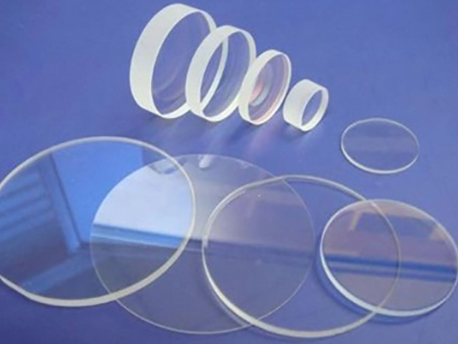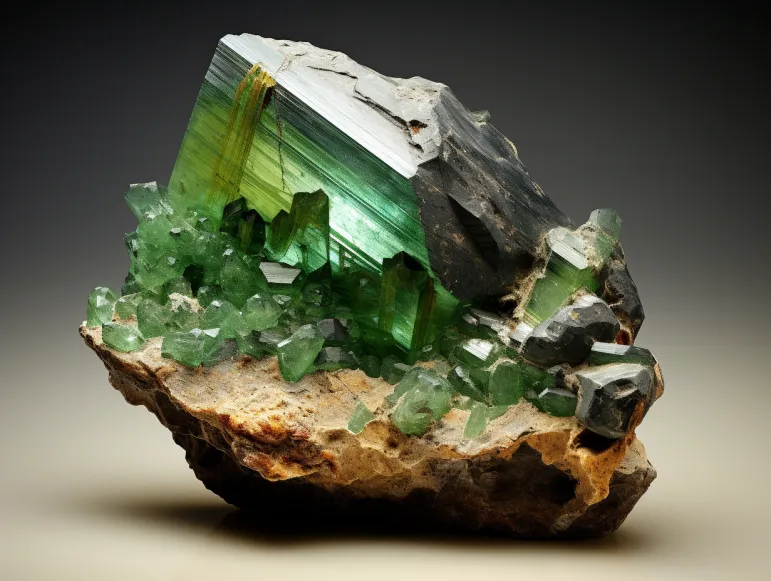
Scandium, a special metal, becomes incredibly useful when it transforms into scandium oxide. Despite its rarity in nature, this compound plays a crucial role in various applications. This article aims to explain how we make scandium oxide and why it matters, especially in ceramics and glass. We’ll explore the straightforward process of making scandium oxide, its practical applications, and what the future might hold for this valuable compound.
How We Make Scandium Oxide: A Step-by-Step Explanation
1. Starting with Special Rocks:
Scandium oxide , often written as Sc₂O₃, mostly comes from special rocks that contain rare earth elements. These rocks, like thortveitite, euxenite, and gadolinite, may not be common, but they hold a good amount of scandium.
To kick off the process of making scandium oxide, we mix these rocks with acid. Then, through a series of steps involving precipitation and purification, we carefully separate and refine the scandium oxide. While this might sound a bit complex, these steps are essential to ensure the final product is very pure.

2. Using Leftover Materials:
Due to its scarcity, scandium often shows up as a byproduct when we extract other metals, such as aluminum and uranium. By incorporating byproduct recovery methods into the production process, we can maximize our resources and get more scandium oxide from these leftovers.
What We Do with Scandium Oxide: Contributions to Different Industries
1. Making Ceramics Strong:
In ceramics, which is like super-strong pottery, scandium oxide is a game-changer. It makes ceramic components stronger, especially in aerospace applications. Its ability to handle high heat makes it ideal for crafting lightweight yet robust parts for airplanes and spacecraft.
2. Fueling Small Devices:
In the world of small devices like phones and computers, scandium oxide is crucial in making tiny parts called ceramic capacitors. These capacitors need to be top-notch, and scandium oxide helps them work efficiently. This becomes increasingly important as devices get smaller and need to be more efficient.
How Scandium Oxide Enhances Glass: A Clear and Strong Influence
1. Making Glass Clearer:
In the glass industry, scandium oxide steps in to improve optical glass. Its addition enhances the glass’s ability to let light through, resulting in clearer lenses, optical fibers, and precision instruments.
2. Boosting Glass Strength Against Heat:
Scandium oxide also contributes to making glass stronger, particularly in terms of heat resistance. This is especially valuable in manufacturing glass components for industries like automotive and aerospace, where exposure to extreme temperatures is common. Scandium oxide ensures that the glass stays strong even in challenging conditions.

What’s on the Horizon: Trends and Challenges in Scandium Oxide Production
While scandium oxide proves to be beneficial, challenges remain in ensuring a stable supply. Its scarcity, combined with extraction complexities, poses economic hurdles. However, the industry is poised for advancements.
1. Sustainability through Recycling:
One future trend centers around sustainable practices, with a focus on recycling methods. Getting scandium from old aerospace and electronics products reduces waste and adds to the scarce supply of scandium. Urban mining, extracting valuable materials from electronic waste, emerges as an eco-friendly approach to sourcing scandium oxide.
2. Technological Innovations in Extraction:
Advancements in extraction technologies hold the key to overcoming current challenges. The integration of artificial intelligence and machine learning algorithms to optimize extraction processes is on the horizon. These technologies, driven by data analysis and predictive capabilities, aim to streamline operations and maximize efficiency.
Conclusion: Scandium Oxide – A Small Thing Making a Big Difference
In conclusion, scandium oxide emerges as a versatile and indispensable compound, playing a transformative role in the ceramics and glass industries. Its significance in enhancing structural integrity, optical properties, and heat resistance underscores its invaluable contribution to various applications.
Scandium oxide is expected to become more important as technology improves and industries seek effective and sustainable materials. This rare compound will play a crucial role in shaping future materials. This rare compound will play a key role in shaping the materials used in the future. With ongoing efforts in sustainability and technological innovations, scandium oxide is a small thing making a big difference in our world, step by step.
